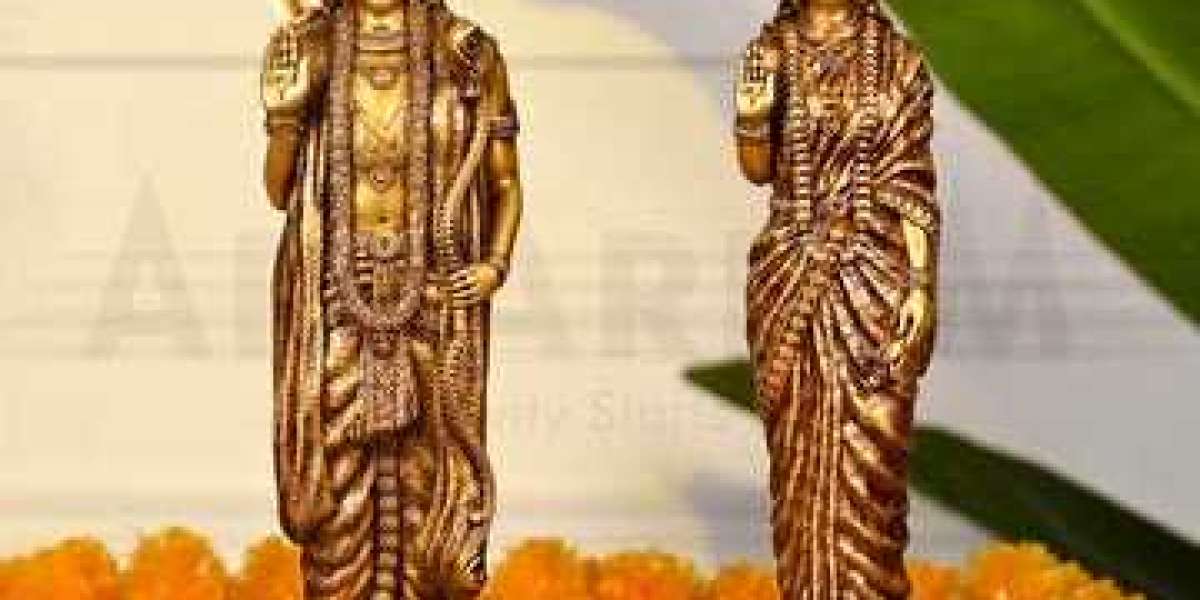God idols hold a special place in the hearts of millions around the world, serving as tangible representations of divine entities. These sacred sculptures are not merely objects of religious veneration; they are intricate works of art that encapsulate centuries of tradition, craftsmanship, and spiritual significance. In this exploration, we delve into the captivating world of god idols, tracing their origins, understanding their cultural contexts, and appreciating the craftsmanship that goes into creating these iconic symbols of faith.
Historical Roots
The history of god idols can be traced back to ancient civilizations, where the worship of deities was an integral part of daily life. From the majestic sculptures of ancient Greece to the intricately carved idols of Hindu temples, each culture has contributed its unique artistic expression to the world of divine representations. The concept of creating physical embodiments of gods and goddesses stems from the human need to connect with the divine on a more tangible level.
In Hinduism, for example, the tradition of idol worship, or murti puja, dates back thousands of years. The use of god idols as a means of devotion became prevalent during the classical period, with temples showcasing exquisite sculptures that depicted various deities in all their glory. The art of crafting these idols evolved over time, incorporating diverse regional styles and materials.
Cultural Significance
God idols are not merely aesthetic objects; they are conduits for spiritual connection and cultural identity. In various religious traditions, the presence of a divine idol in homes or temples symbolizes the constant presence of the deity, fostering a sense of devotion and sacredness. Families often pass down these idols from generation to generation, creating a link between the past and the present.
In Hinduism, for instance, god idols play a central role in religious rituals and ceremonies. Devotees believe that the divine resides within the idol, making it a focal point for prayers and offerings. The use of specific materials, colors, and poses in these idols carries symbolic meaning, reflecting the attributes and characteristics associated with each deity.
Craftsmanship and Artistry
The creation of god idols is a meticulous and labor-intensive process that requires skilled artisans. Across different cultures, craftsmen employ various techniques and materials to bring these divine forms to life. In India, skilled sculptors, often belonging to families with a centuries-old tradition of idol-making, continue to produce exquisite pieces using methods passed down through generations.
The choice of materials is a crucial aspect of idol craftsmanship. Stone, wood, metal, and clay are common mediums, each offering unique challenges and opportunities for artistic expression. Intricate detailing, from the facial expressions to the ornaments adorning the idols, reflects the craftsmanship's precision and the artisan's commitment to capturing the essence of the divine.
In other cultures, such as ancient Greece or Rome, marble was the preferred material for sculpting gods and goddesses. The mastery of sculpting in marble allowed artists to create lifelike representations that conveyed a sense of divinity and perfection. The meticulous carving of features, drapery, and poses showcased the artists' dedication to achieving a harmonious balance between realism and the transcendental.
Evolution of Styles
As cultures and societies evolved, so did the styles and techniques employed in crafting god idols. The diversity of Hinduism, for example, is reflected in the multitude of regional styles found across the Indian subcontinent. The sculptures of South India, with their dynamic poses and intricate details, differ significantly from the more serene and monumental sculptures of North India.
Similarly, in ancient Egypt, the stylized representations of gods and goddesses showcased a unique blend of symbolism and artistic expression. The elongated forms, hieroglyphic inscriptions, and the use of specific materials like basalt or limestone contributed to the distinctive Egyptian style.
In contrast, medieval Europe saw the emergence of Gothic art, with its emphasis on height and verticality. Sculptures in cathedrals and churches depicted saints and biblical figures, serving as focal points for Christian worship. The transition from the Romanesque to Gothic style marked a shift in artistic sensibilities, reflecting the evolving spiritual and cultural milieu of the time.
Modern Interpretations
While traditional craftsmanship continues to thrive, contemporary artists have also embraced innovative approaches to creating god idols. The fusion of traditional techniques with modern materials and forms has given rise to a new wave of artistic expression. Sculptors experiment with materials like fiberglass, resin, and even recycled materials, pushing the boundaries of convention while maintaining the spiritual essence of the idols.
In contemporary Hindu art, artists like Subodh Gupta have gained acclaim for their reinterpretation of traditional forms. Gupta's use of everyday objects, such as stainless steel utensils, to create modern deities challenges the conventional notions of idol making while sparking conversations about tradition, consumerism, and spirituality.
Conclusion
God idols stand as enduring symbols of human creativity, spirituality, and devotion. Across cultures and centuries, these sacred sculptures have evolved, reflecting the artistic sensibilities and cultural nuances of their respective periods. The craftsmanship involved in creating these idols is a testament to the skill and dedication of artisans who carry forward ancient traditions.
As we navigate the intricate details of god idols, from the choice of materials to the evolution of styles, we gain a deeper appreciation for the fusion of art and spirituality. These divine representations not only serve as objects of veneration but also bridge the gap between the earthly and the divine, connecting individuals to their cultural heritage and to something greater than themselves. In the world of god idols, art becomes a conduit for the sacred, and devotion takes on a tangible form that transcends time and space.








